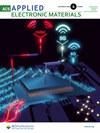Real-time infectious disease endurance indicator system for scientific decisions using machine learning and rapid data processing
IF 4.3
3区 材料科学
Q1 ENGINEERING, ELECTRICAL & ELECTRONIC
引用次数: 0
Abstract
The SARS-CoV-2 virus, which induces an acute respiratory illness commonly referred to as COVID-19, had been designated as a pandemic by the World Health Organization due to its highly infectious nature and the associated public health risks it poses globally. Identifying the critical factors for predicting mortality is essential for improving patient therapy. Unlike other data types, such as computed tomography scans, x-radiation, and ultrasounds, basic blood test results are widely accessible and can aid in predicting mortality. The present research advocates the utilization of machine learning (ML) methodologies for predicting the likelihood of infectious disease like COVID-19 mortality by leveraging blood test data. Age, LDH (lactate dehydrogenase), lymphocytes, neutrophils, and hs-CRP (high-sensitivity C-reactive protein) are five extremely potent characteristics that, when combined, can accurately predict mortality in 96% of cases. By combining XGBoost feature importance with neural network classification, the optimal approach can predict mortality with exceptional accuracy from infectious disease, along with achieving a precision rate of 90% up to 16 days before the event. The studies suggested model’s excellent predictive performance and practicality were confirmed through testing with three instances that depended on the days to the outcome. By carefully analyzing and identifying patterns in these significant biomarkers insightful information has been obtained for simple application. This study offers potential remedies that could accelerate decision-making for targeted medical treatments within healthcare systems, utilizing a timely, accurate, and reliable method.利用机器学习和快速数据处理进行科学决策的实时传染病耐力指标系统
SARS-CoV-2 病毒可诱发急性呼吸道疾病,通常被称为 COVID-19,由于其高度传染性及其在全球范围内造成的相关公共卫生风险,已被世界卫生组织定为大流行病。确定预测死亡率的关键因素对于改善患者治疗至关重要。与计算机断层扫描、X 射线和超声波等其他数据类型不同,基本血液检测结果可广泛获取,并有助于预测死亡率。本研究提倡利用机器学习(ML)方法,通过血液检测数据来预测 COVID-19 等传染病的死亡率。年龄、LDH(乳酸脱氢酶)、淋巴细胞、中性粒细胞和 hs-CRP(高敏 C 反应蛋白)是五个极其有效的特征,将它们结合在一起可准确预测 96% 病例的死亡率。通过将 XGBoost 特征重要性与神经网络分类相结合,最佳方法可以非常准确地预测传染病的死亡率,同时在事件发生前 16 天内的准确率可达 90%。研究结果表明,该模型的出色预测性能和实用性已通过对三个取决于结果发生天数的实例的测试得到证实。通过仔细分析和识别这些重要生物标志物的模式,我们获得了可供简单应用的具有洞察力的信息。这项研究提供了潜在的补救措施,可以利用一种及时、准确和可靠的方法,加速医疗保健系统内有针对性的医疗决策。
本文章由计算机程序翻译,如有差异,请以英文原文为准。
求助全文
约1分钟内获得全文
求助全文

 求助内容:
求助内容: 应助结果提醒方式:
应助结果提醒方式:


